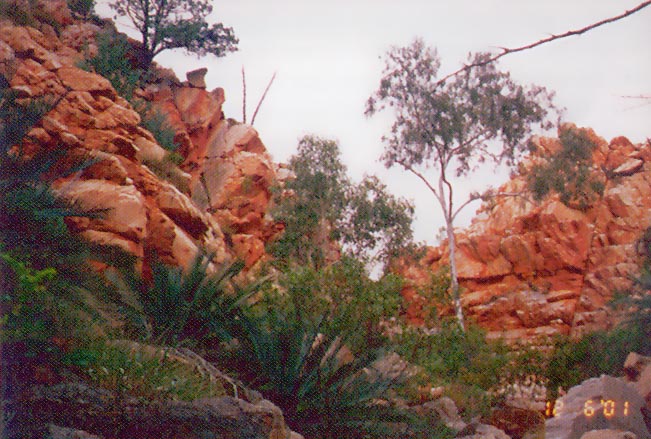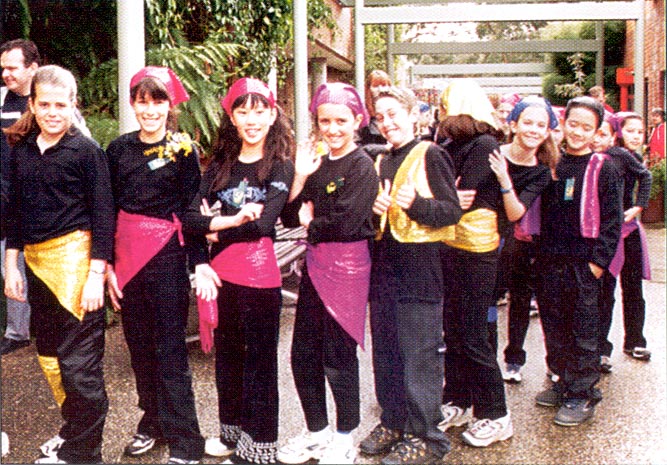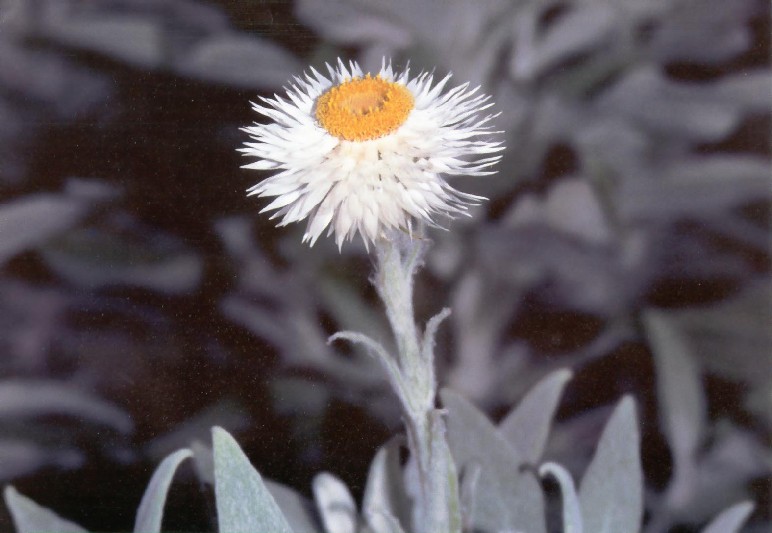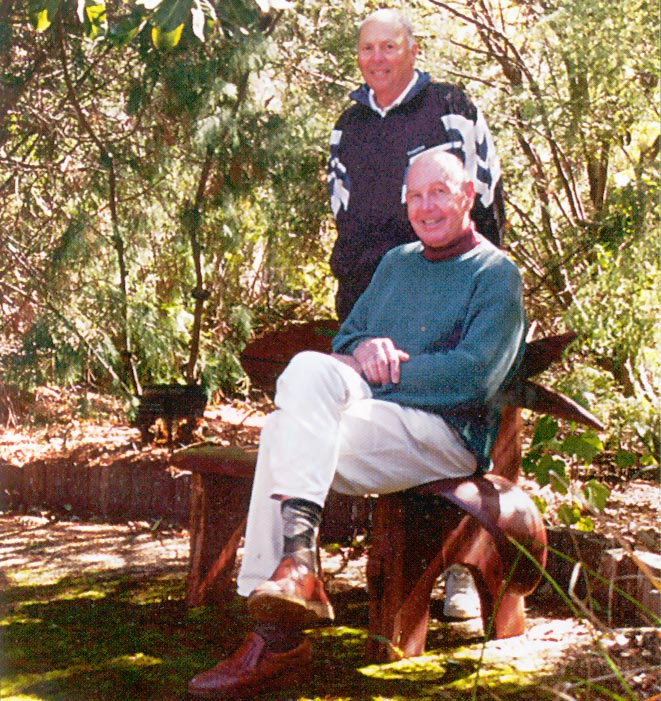On the Larapinta
Trail
Anne Phillips,
Volunteer Guide
Our purpose for going to Central Australia was to walk the Larapinta Trail, a long-distance walking track (at present over 150 km and currently being extended) along the backbone of the West MacDonnell Ranges from Alice Springs west to Mt Sonder an Mt Razorback. This ancient, arid landscape, the same as depicted in the paintings of Albert Namatjira and Rex Battarbee, held an attraction for Margaret Lynch, Delores Saulter and me.
Being guides at ANBG, we were very keen to see the plants, and our introduction to these was by Peter Fannin at Uluru. The brother of Anne Urban, author of Wildflowers and Plants of Central Australia (soon to be in print again), Peter had us sucking nectar from Grevillea eriostachya and feeling the difference in sharpness between Triodia irritans and Triodia pungens which is softer, but sticky. We also saw the Desert Oak (Allocasuarina decaisneana) standing like a grey/green sentinel while sending its roots deep down, and only after many years, when the tree is quite tall, does it develop its canopy branches.
We were treated to a visit to the warehouse where the Aboriginal carved artworks are stored before being sold either locally through the Maruku Art and Craft Centre, or wholesale to shops and galleries around Australia or overseas. The two main timbers used for these carvings are River Red Gum (Eucalyptus camaldulensis), the most widely distributed eucalypt in Australia, and the yellow roots of Mulga (Acacia aneura). I'd never seen so many lizards and snakes!
Our second introduction to the flora was at the Desert Park at Alice Springs with its wonderful display of Sturt's Desert Pea (Swainsona formosus). There were lots of birds to see, and in the nocturnal house were some rare and endangered animals including the bilby and mala.
Then we began the eight-day walking trip with five others as keen as us for the quiet, open spaces, plus our guide and our caterer/driver from World Expeditions. We set off from Alice Springs Telegraph Station, a 17 km walk to Wallaby Gap, encountering Port Lincoln Parrots and a Child's Python. Two plants we were to see throughout were Indigofera leucotricha, blue/grey pincushions dotting the landscape and Ptilotus spp with their pink fluffy heads.
You've heard the saying "it never rains in the desert". Well, a storm hit us at Simpsons Gap, soaking the swags, and as we couldn't pack them away wet, we only did a short walk next morning while they dried. We saw a 300-year-old Ghost Gum (Eucalyptus papuana), and a large flock of Red-tailed Black Cockatoos.
Day 4, Jay Creek to Standley Chasm, though only 12 km, was the hardest. Up and down steep ridges, I could have done with an oil can to lubricate my knee and hip joints. But it was a gem of a day - weather perfect, scenery spectacular and flowers fabulous. The camera happily clicked all day. I came across a small pocket of Holly Grevillea (Grevillea wickhyamii). Up the side of a steep incline was red-budded Finke River Mallee (Eucalyptus sessilis), and the rare Hakea grammatophylla, bright pink and beautiful.
Eucalyptus sessilis
A singular showing of Hibbertia glaberrima, then a small patch of Eucalyptus orbifolia with its blue/green heart-shaped leaves and miniritchi bark. We had an arduous descent into a gully filled with Macrozamia macdonnellii. And at the end of the walk another taxing descent, squeezing through rock holes, shuffling along slippery logs and wading through crotch-deep (to those with short legs) water to arrive at the back of Standley Chasm.

Macrozamia macdonnellii
We were rained out again that night - more sodden bedclothes. Thank goodness there were vacancies at Glen Helen Gorge Resort (outback hotel/motel standard), situated on the Finke River, said to be the oldest river in the world. From here we drove to Ormiston Gorge for an 8 km walk. Spied Sturt's Desert Rose (Gossypium sturianum), on the side of the road.
Next day, clear but windy and cold, we climbed Mt Sonder, 1,380 m, doing the 16 km in record time. It was good to get back to camp early and catch up on identifying the plants we'd seen. A singer/guitarist was playing at the hotel that night with a repertoire of Simon and Garfunkel et al. Hmmm! "Let's have a game of darts." But sadly, in the box the barman produced from under the bar, among the broken tails and brass shafts, was one complete dart, and by the end of our long game, its tail also fell off.
Our last camp was at Finke River National Park where we walked through Palm Valley, the home of about 3,000 rare Red Cabbage Palms (Livistona mariae). These palms have survived here for some 20,000 years.
Back at Alice Springs and our final destination before flying home was a visit to Olive Pink Botanic Garden. Sorry George, but Eucalyptus chippendalei hasn't grown much since it was first planted 30 years ago.
As always, time runs out and there is so much more to see. But I'll definitely go back to see some of these places again. And I will certainly go back to Sultan's Turkish Restaurant in Alice. They had one of the best belly dancers I had ever seen.





